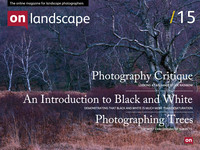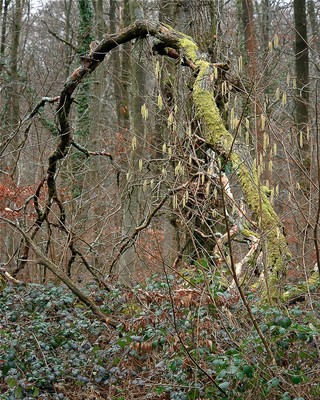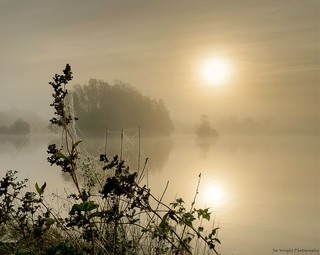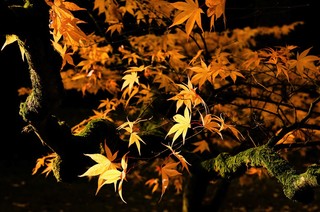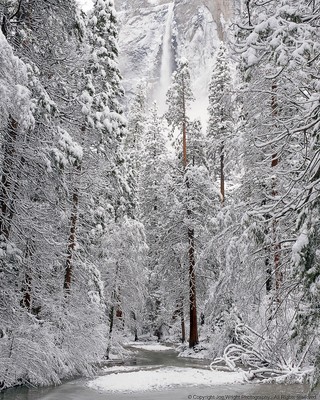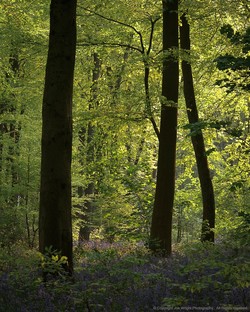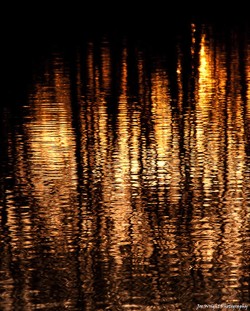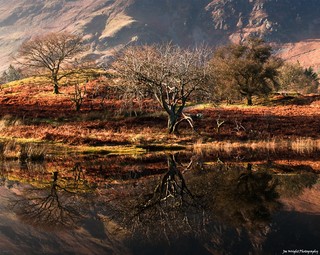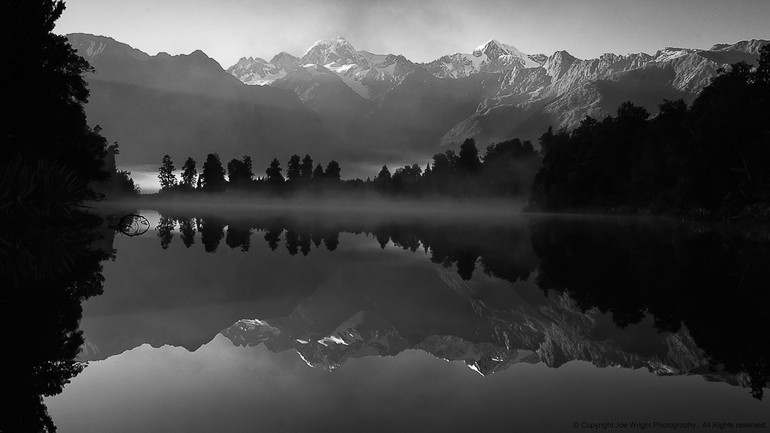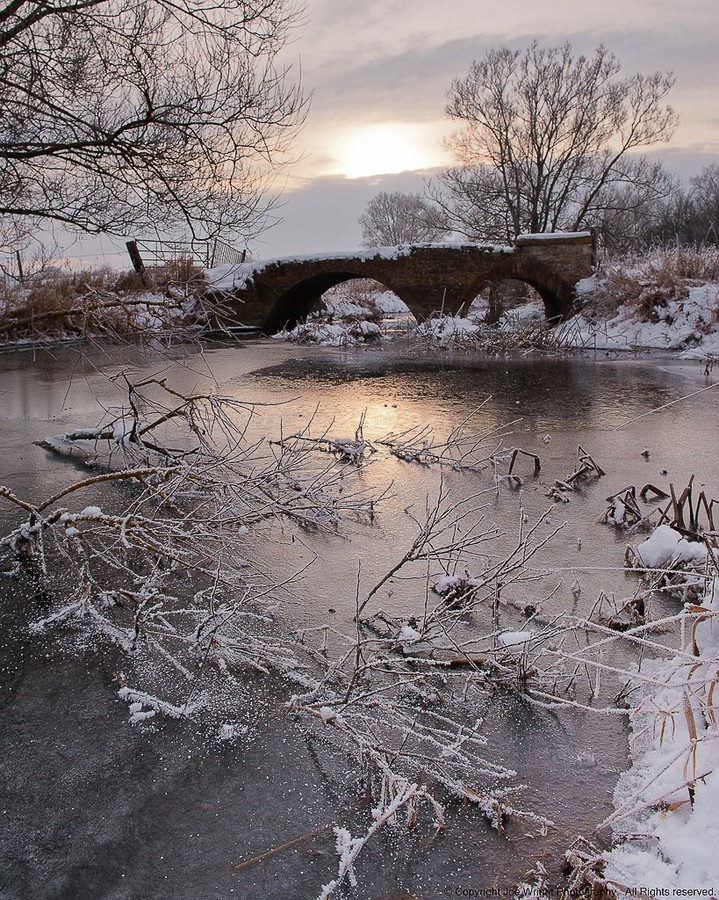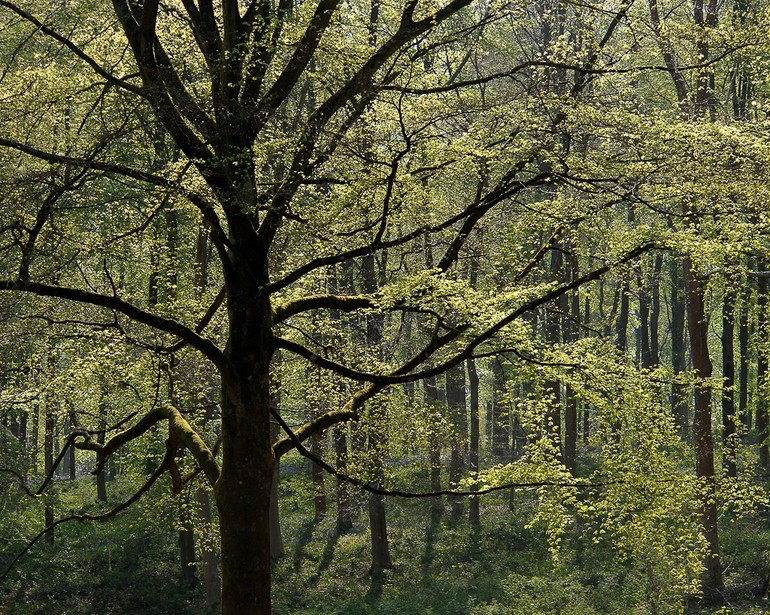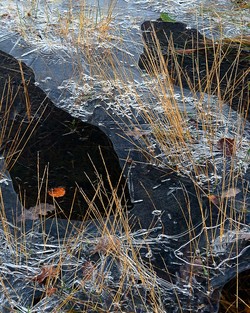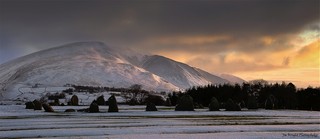Featured photographer

Tim Parkin
Amateur Photographer who plays with big cameras and film when in between digital photographs.

Joe Wright
Frequently found wandering the woodlands, hills and river banks of the British countryside.
Dav Thomas sent me an email recently saying to take a look at Joe Wright's photographs as he saw something interesting going on. After looking myself I had to agree and so called Joe for a chat. He's only been taking photography seriously for about four years but there has been a major change in his outlook over the last year which caught both of our eyes. A systems architect living in Swindon, Joe has a particular love to the Lake District harking back to holidaying in Grisdale as a child. I asked Joe a few of the usual questions and some more about his photography.
In most photographers lives there are 'epiphanic’ moments where things become clear, or new directions are formed. What were your two main moments and how did they change your photography?
For me this is quite easy to answer, two moments which will always be with me and were born out of a number of experiences coming together for that 'epiphanic' moment. That said, every day I spend in the landscape is a blessing and I am never failed to be inspired with everything nature has to show us. So, the first moment came on an extended holiday touring New Zealand in 2006, a lifelong ambition for me and my lovely wife Deborah, for which I had invested in buying my first DSLR. In my research for the holiday I had seen a number of fantastic images from some of the areas we would be visiting, one of them, a mirror reflection of Lake Mathieson stood out for me. I decided to set myself the challenge to come back with an image that I wouldn't be unhappy about hanging on our wall.
You may be thinking what is so special about simply copying an image that has been made literally thousands of times before? Well, what made taking this particular photograph epiphanic was at this point I reconnected spiritually to the landscape. It was less about the process of taking the photo, the ‘cliché’, but more about the whole experience of being there alone, immersed in the landscape, the awakening dawn, and the primeval sounds of the forest and for the first time in a long
while, time to reflect and contemplate. From that point on I knew I wanted to somehow share moments like those through landscape photography.
But why was this a reconnection? Well, I have to go back a few years for this, in fact right back to my childhood. I spent my growing up years living on a farm, pretty much running free in the woods and the most amazing established orchard. Even when we moved in to town in my teens I soon found all the wild places to explore. Most of the time was spent on my own, not that it mattered, I was happy, in fact so happy, frequently I wouldn’t come home until hunger reminded me I lived in a house not the woods! Also, many family holidays were spent in the Lake District, a fantastic lodge set in a clearing in Grizedale Forest, the home of a family friend John Cubby, formerly head wildlife ranger at the Forestry Commission’s Grizedale Forest Park. What better place for a young lad to explore and connect with nature. So it was only natural that photography would ultimately lead me back to
my spiritual home, the landscape, and those wild wooded places. I hope one day to be able to return to Grizedale and photograph the tarns and forests of my youth.
The second moment was much more recent, in fact just two months back. It was the morning we were due to fly back to the UK from another holiday, this time the SW USA. The trip finished with a few nights in Denver and having done my research I knew there was a landmark photography gallery based there; Camera Obscura, that had prints by Christopher Burkett available to view and buy (I wish!). My timing couldn't have been any better really, the gallery has now closed due to the owner retiring, and sadly I sense a big loss for all involved and photography in general. However, the gallery staff was only too happy to pull out 20 or so of CB's prints, many of which were the large 30"x40" prints. You will know how inspiring his images can be from
viewing them on his website and as featured in an earlier issue of GBL, the quality in his books are a level well beyond that online, however, nothing really prepares you for the impact of the print. The work is spectacular, a luminosity and richness of colour, depth and detail of which I have never seen in colour print before. To see the actual prints was for me quite frankly, emotionally moving, it bought home everything that I aspired to myself when I first made that connection to the landscape in NZ. I now how much further I have to go in my work to express intense feelings through something as simple as a picture.
In the last few months your photography has changed considerably (in my eyes anyway) and you have been a lot more creative in your compositions - what happened?
I think this comes down to the photographers 'rites of passage'! I guess it all started from being the self appointed family photographer responsible for making sure we had some decent memories of the places we visited. Then having made that connection to photography and the landscape, not really knowing any better, I then set about following a well trodden path of 'chasing the sun' and ' looking for other tripod holes' and simply recreating my versions of cliché’s. Not that there's anything wrong with that, isn't every photograph just a 'cliché' but we all seek to add our own mark to it? Maybe the subject of a future article which I'm sure would result in a good debate!
However, this wasn't working for me, it wasn't fulfilling in what I was looking to achieve. It was all about me as a photographer, that I could follow a well trodden path and not what I wanted to convey about the subject. My way out of that was to become a little more contemplative, make it personal, and think about that spiritual connection again. The result I think is work that tries to convey the intimate aspects of the landscape that ordinarily go unnoticed playing a supporting role in the bigger picture, then for that briefest moment of time takes centre stage. That said, there is so much more I do want to explore with my photography, both from a technical standpoint but also in an artistic sense, furthering the way I express myself through my photography.
Not being a full time photographer, how do you find time to get out and take pictures?
Not easily, it's all about balance, which I am sure my wife will tell you I don't always get right! One thing that works for me is to focus on having a local project, an area you can get familiar with and dip in and out of whenever the opportunity or conditions are right. This can be a double edged sword though, things you see everyday become unnoticeable and in a way you have to work harder to 'see' and feel an image but ultimately I do believe this allows you to develop some intimacy
with an area that leads to more rewarding photographs. This approach has led to two of my most recent favourite pictures. It is great to travel though, if only sometimes to realise where you live has just as much to offer.
Could you tell us a little about the cameras and lenses you typically take on a trip and how they affect your photography?
I use a Nikon digital setup; a D700 body, 17-35, 24-70, 80-400 and 105 lenses, combined with a Lumix LX5. I rarely go wider than the 24, so the 24-70 is pretty much on the camera most of the time. One way the system has affected me though is I have had to learn to see like my camera, how I need to work with it to get the image I'm looking for without then spending hours in front of a screen. Something I have also done is to start using a right angle view finder, I find this really helps me slow down and examine every part of the composition before the shot is made. With the LX5, given a bit of care and attention I am finding it is turning out great results comparable at times with the D700, so what at times are just sketching shots end up as the final result. As a consequence it is pretty much with me wherever I go, if only to use to record a scene with the intention of a return visit.
You told me about a recent trip to America that was planned around photographing some of the ‘icons’ and yet your photographic tastes have changed since then - tell me a little bit about this.
There's a link here to the 'rites of passage'. At the time we booked and planned the trip I was still in a frame of mind to drive round SW America ticking 'icons' of a list, which to some extent I did still do and really enjoyed. But during the period before we left for the trip my philosophy on photography became more personal, less inclined to simply recreate popular views. So whilst there was no doubt the trip was a fantastic experience I never felt I made quite the same connection I have with the landscapes I know and love so well in the UK. In hindsight I should have reduced the number of locations and spent more time in each, still giving the chance to get the 'icons' but also to explore opportunities closer to my tastes. I did realise an ambition to visit Antelope Canyon though which I'll write about a bit on my blog and to spend time in and around Glen Canyon, an area a big inspiration of mine Eliot Porter documented.
You write quite a lot on your blog , do you think writing helps you as a photographer as well as your readers?
In a way the act of writing about my photography makes me think and reflect about what it was that made me take an image in the first place, so in a sense that probably is helping me develop. But in the end there's nothing better than practice, even in photography, so I'll always choose to be out with the camera over sitting in front of the PC writing about it, which is probably why I’m not writing as much as I would like. I was never a big one for writing though but I think my interest in photography has sparked something in my right brain, I suddenly find myself wanting to share experiences and knowledge with others! A good example being my NZ tour blog which I know has been put to good use by others researching trips there http://newzealandblog.jarw.co.uk/.
Tell me what your favourite two or three photographs are and a little bit about them?
R1 – For all the reasons I talk about earlier, the first will be an image of Lake Mathieson reflecting the Mt Cook range, this will always have a place in my soul.
R2 – Next up is a picture showing the bridge over the Isis River on the fringes of the Cotswold Water Park. Why this is a current favourite boils down to the fact I had visualised an image with the bridge for a number of years, waiting for the right conditions, but when the time came to it what I decided to portray was something altogether different. For me it portrays a shift in direction of compositional complexity and subtleness of light.
R3 – Finally something from very recent, a 'Beech tree in spring leaf'. Taken in a very popular beauty spot, ironically it sits in a car park (hope that doesn't spoil the beauty of it!) I knew the tree was there, parked under it countless times, on this occasion I had parked in a different spot which afforded me a different viewpoint, the light and time was right, I happened to glance back in to the woods and bingo there it was shouting out at me... sometimes you just get lucky! A few days later this opportunity was gone, the trees came in to full leaf and the composition was gone. It took a while to frame up but I love the contrast of the ordered stands of Beech in the background setting a canvas for the ancient Beech to spread its arms across.
What sort of post processing do you undertake on your pictures? Give me an idea of your workflow.
Ultimately as little as possible. I use Lightroom as my cataloguing, workflow and processing engine. I very rarely go anywhere near the 'auto' processing options and will typically just touch WB, exposure, ‘levels’, correct colour casts, etc. Occasionally I will dodge and/or burn sections and target specific colours in an attempt to reflect my memory of a particular tone or draw out a texture that wasn’t handled to my liking by the camera. I have no qualms about shooting with a crop in mind, favouring 5x4 format for Portrait and 16x9 or wider for Panoramic.
Do you print much of your work? If so how have you approached it and if not, why not?
Not as much as I would have liked to by now. Printing is still bit of a black art to me at the moment, having dabbled with my own printing, local printers and online companies, but as yet I haven’t been entirely satisfied. That said, of course I am going to be my own harshest critic. It is one area I am going to invest more time in though, having seen the work by Christopher Burkett there is nothing better than seeing the final picture ‘in the flesh’ hanging on a wall. To date the prints have primarily been for display in local exhibitions, my way of testing the waters before I consider anything more ambitious. An ambition being to be exhibited either solely or part of a UK landscape orientated exhibition.
Tell me about the photographers that inspire you most?
Those that have made a profound difference; as mentioned earlier, Christopher Burkett, his expression of spirituality has certainly made its mark on me. Eliot Porter for his ability to show nature in its quietest forms. Philip Hyde demonstrates how to look past the beauty of a scene, into its essence, and his work supporting conservation. Phil Malpas gave me encouragement, advice and early inspiration when I first began my photographic journey. Joe Cornish and Charlie Waite for inspiring a whole generation of UK landscape photography. I also continue to be amazed by the collective of the UK based photographers using flickr and featured in GBL. Most of all I really get a sense that something special is happening in UK landscape photography at the moment.
What sorts of things do you think might challenge you in the future or do you have any photographs or styles that you want to investigate? Where do you see your photography going in terms of subject and style?
I am going to explore film, specifically large format this year. I do feel that the digital technology sometimes lacks the subtlety I am looking for in the rendering of certain colour tones and textures, particularly as I start to explore the more intimate aspects of the landscape where tone is critical when trying to portray delicacy of texture.
Who do you think we should feature as our next photographer?
Phil Malpas, David Ward or retrospectively, Philip Hyde.
Well a big thanks to Joe Wright for a great set of answers and he'll be pleased to know that we've been planning a Phil Malpas and Philip Hyde article for a while now. Keep tuned in! (stupid phrase for the internet really - keep your IP packets routed through your firewall would be more correct I suppose - doesn't quite slip of the tongue as easily... ho hum..)
You can see more of Joe's pictures at either his website www.joewrightphotography.com or on his flickr stream at http://www.flickr.com/photos/noddygoestotoytown/.

